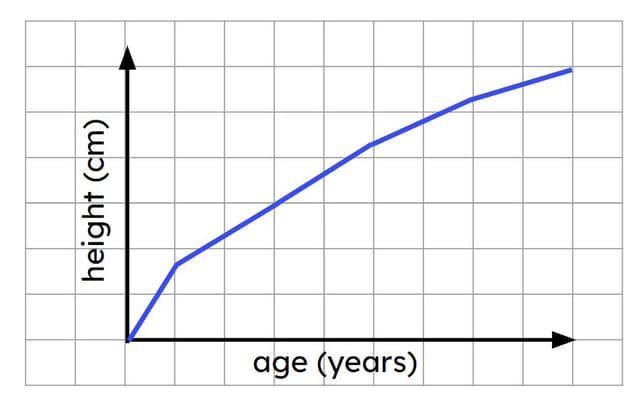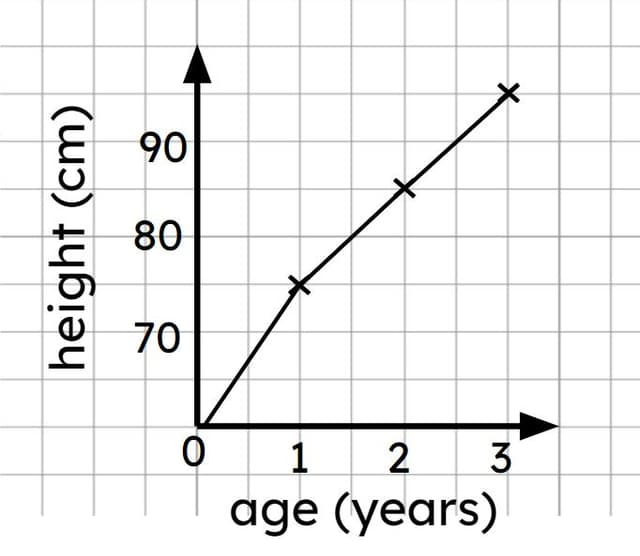Myths about teaching can hold you back
- Year 5
Analysing data about human height
I can use a line graph to analyse results and make predictions.
- Year 5
Analysing data about human height
I can use a line graph to analyse results and make predictions.
These resources were made for remote use during the pandemic, not classroom teaching.
Switch to our new teaching resources now - designed by teachers and leading subject experts, and tested in classrooms.
Lesson details
Key learning points
- Scientists can use graphs to represent data visually and make it easier to understand.
- Human height can be measured and plotted on a line graph to show how height varies with age.
- Findings from enquiries can be used to make further predictions.
Keywords
Data - In science, data is information collected during an investigation, which can include numbers, symbols, pictures, or text.
Analyse - To analyse data is to examine it carefully in order to explain or interpret patterns, trends, or relationships.
Bar chart - A bar chart is a type of diagram that visually represents data using rectangular bars.
Line graph - A line graph is a type of diagram that can be used to show how a variable changes over time.
Prediction - A prediction is a statement about what is expected to happen.
Common misconception
Pupils may not recognise the value of representing data on graphs or charts and might view it as just another task to complete.
Using the lesson resources, clearly explain the value of presenting data in a chart or graph and how it makes information easier to understand.
To help you plan your year 5 science lesson on: Analysing data about human height, download all teaching resources for free and adapt to suit your pupils' needs...
To help you plan your year 5 science lesson on: Analysing data about human height, download all teaching resources for free and adapt to suit your pupils' needs.
The starter quiz will activate and check your pupils' prior knowledge, with versions available both with and without answers in PDF format.
We use learning cycles to break down learning into key concepts or ideas linked to the learning outcome. Each learning cycle features explanations with checks for understanding and practice tasks with feedback. All of this is found in our slide decks, ready for you to download and edit. The practice tasks are also available as printable worksheets and some lessons have additional materials with extra material you might need for teaching the lesson.
The assessment exit quiz will test your pupils' understanding of the key learning points.
Our video is a tool for planning, showing how other teachers might teach the lesson, offering helpful tips, modelled explanations and inspiration for your own delivery in the classroom. Plus, you can set it as homework or revision for pupils and keep their learning on track by sharing an online pupil version of this lesson.
Explore more key stage 2 science lessons from the Human development unit, dive into the full primary science curriculum, or learn more about lesson planning.

Equipment
None required.
Content guidance
- Depiction or discussion of sensitive content
Supervision
Adult supervision recommended
Licence
Prior knowledge starter quiz
6 Questions
Q1.Once humans reach the stage of development, they do not grow any taller.
Q2.What number is marked on this number line?

Q3.Which of these units can be used to measure human height?
Q4.Why might scientists use a line graph to show their results?
Q5.Scientists can calculate a to help them find patterns in results. They do this by adding together the amounts they have and then dividing by the number of quantities they added.
Q6.Match the decimal number to the correct fraction.
¼ or one quarter
½ or one half
¾ or three quarters
1 whole
Assessment exit quiz
6 Questions
Q1.Which of these diagrams is a bar chart?


Q2.A graph is useful for showing human height at different ages because it shows how a value varies between different points.
Q3.Which of these graphs could show changes in human height between the ages of 25 and 40?



Q4.When scientists use their results to predict what they think will happen in future investigations, it is called making a...
Q5.According to this graph, how tall is a 1½-year-old likely to be?

Q6.Andeep’s sister is 67 cm tall. Use the graph to predict how old she is likely to be.



